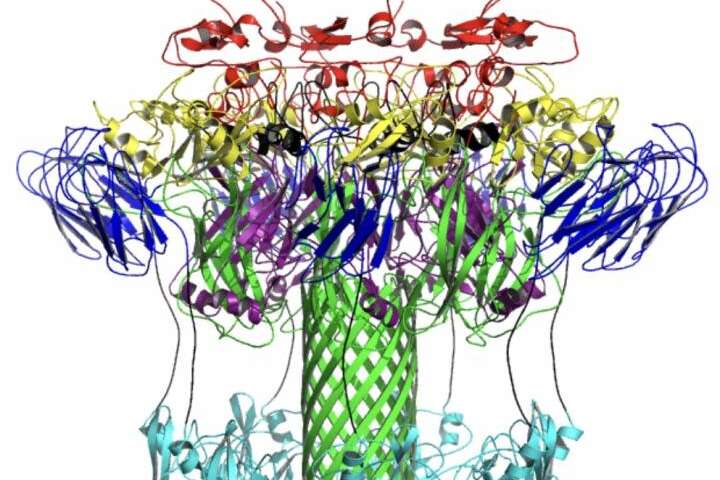Researchers identify starting point for designing drugs that cure clostridium difficile

A newly published paper in PNAS details a research breakthrough that provides a promising starting point for scientists to create drugs that can cure C. diff—a virulent health care-associated infection that causes severe diarrhea, nausea, internal bleeding, and potentially death. The bacteria affects roughly half-a-million Americans and causes nearly 15,000 deaths in the U.S. annually.
Overuse of antibiotics has increasingly put patients in heath care facilities at risk for acquiring C. diff and made some strains of the bacteria particularly hard to treat. But newly discovered information about a type of toxin released by the most dangerous strains of C. diff is providing researchers with a map for developing drugs that can block the toxin and prevent the bacteria from entering human cells.
“The most dangerous strains of C. diff release a binary toxin that first binds to cells and then creates a pore-forming channel that allows the toxin to get inside and do harm,” said Amedee de Georges, the study’s principal investigator and a professor with the Advanced Science Research Center at The Graduate Center, CUNY’s Structural Biology Iniative. “We were able to combine several increasingly popular biophysical imaging techniques to visualize and characterize every atom of this binary toxin and show us where they are positioned. These details provide a critical and extremely useful starting point for designing drugs that can prevent C. diff infection.”
Researchers used a combination of tools—cryogenic electron microscopy, X-ray crystallography, nuclear magnetic resonance, and small angle X-ray scattering—to observe and identify the C. diff toxin’s structure and mode of action. Researchers believed that it is a binary toxin (meaning it needs two components to function) that might employ a similar method to anthrax toxin to enter cells. Using that as their starting point, they sought to characterize how C. diff toxin is different than anthrax.
“We observed two similar but distinct forms of the C. diff toxin—one where we see the pore-forming channel and one where it is invisible,” said the first author, Xingjian Xu, a Graduate Center, CUNY Ph.D. student and a researcher in de Georges’ lab. “This gives us clues as to how to prevent the formation of the channel and stop the bacteria from entering the cell.”
Researchers also identified a novel calcium binding site on one of the C. diff toxin’s domains. This type of binding structure hasn’t been identified on any other similar toxins, suggesting that calcium plays a critical role in regulating the formation and transition C. diff into cells.
Source: Read Full Article


